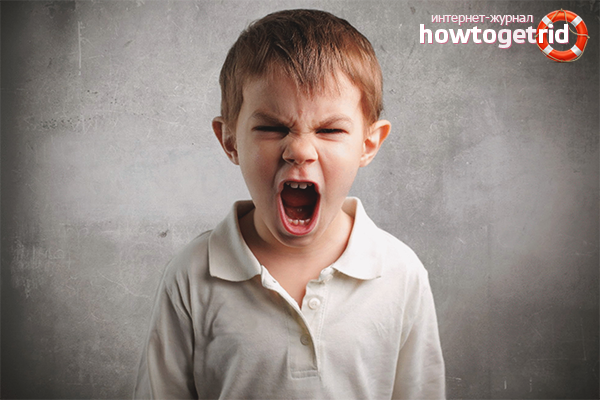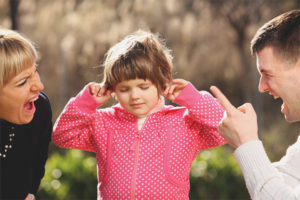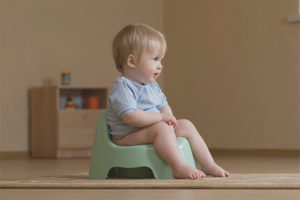The content of the article
Every mother sooner or later faces the first hysteria of her child. The reasons for this behavior of the baby can be a great many. This may be poor health or simple manipulation of parents. But it is important not only to find out the cause of the hysteria, but also to be able to calm the child.
Causes of Tantrum
Tears and uncontrolled behavior of the child are often explained by the formation of the personality and the inability of the parents to communicate with him. The personal interests of the child are faced with the desires of adults, and he is trying to achieve his goal with the help of hysteria. Infants, for example, are trying to achieve the desired cry. Growing up, they continue to do the same, because they are not yet able to do otherwise.
Often, children copy the behavior of adults and simply repeat what they see in the family. But you can only calm the child and prevent the tantrum from becoming a habit,if you figure out the real reason for this condition. Tantrum in children provoke:
- inability to express their protest or discontent;
- lack of attention from adults;
- the desire to get what was denied;
- lack of sleep, feeling sick, etc .;
- excessive severity and custody of parents;
- mistakes in education;
- weak nervous system of the child;
- lack of an established system of rewards and punishments;
- detachment from favorite activities.
Hysterical child often puzzles parents. They do not know how to behave and thus provoke more serious attacks. After all, it depends on the attitude of adults how much time the child will use this method to their advantage. The main thing parents should remember is that it is impossible to react violently to such behavior. Then there is the possibility that the tantrums will stop. But this, of course, is not enough.
Tantrum or caprice
It is important to find out to parents before starting to think through their own line of conduct. The difference between these two concepts is small, but it is still there.Everything is quite simple - the child is not able to control his emotions during a tantrum, while a whim is intentional behavior. If the baby is naughty, it means that he wants to get something and most often this “something” is impracticable at the moment. For example, the desire to walk when it rains, the demand for toys that parents can not afford, etc.
Tantrums often occur involuntarily, while there is no control of emotions. In this case, the child can easily harm himself by scratching his face or hitting the wall with his head. During a strong tantrum, the baby may experience convulsions in which he will arch. Such attacks are always accompanied by aggressive behavior and irritability. With increased attention of others, the state usually increases, in the absence of the audience, it quickly stops.
Tantrum 1.5-2 years
This condition in children after 1 year is often associated with a strong nervous overstrain, as their psyche is still not strong enough. In the future, such tantrums become a means to achieve the desired. At the age of 2 years, children usually already understand the meaning of such words as “no” and “no”.And begin to use it. But they are not yet able to defend their positions verbally, so they act with the help of their own behavior. Parents usually choose one of two methods - either they satisfy the child’s wish or they scold them.
At this age, children always insist on their desire, repeating the phrase "I do not want," "I will not," "Buy." If the hysterics did begin, you do not need to persuade the child, to pull, threaten, etc. In no case do not need to leave such a baby all alone, you should always be nearby. And of course, you can not go on about it. If the child understands that tears and screams help him in getting something, the seizures will be repeated more and more often.
During a fit of hysteria, you can hug a child and talk about your love for him. But if he is desperately trying to break free, it’s better to let him go. The main thing is that he does not control adults with the help of his behavior. Suppose a child does not want to stay with one of the adults and begins to "roll a tantrum." He must be left and gone, otherwise the hysteria will only intensify.
Attacks of tears and shouts in public, child psychologists are advised to just wait and in no case scold the baby.If he requires a toy, the parents' refusal must be firm and resolute. Usually such childish behavior is just a demonstration to the public, and if the parents do not react, then over time the child will get tired of such an activity.
Tantrum at 3 years
At about this age, children begin to realize themselves and begin to assert their desires. Often parents, when confronted for the first time with the stubbornness of their crumbs, are amazed and do not know what to do. The child may begin to behave extremely inadequately, for example, when asked to approach, he runs away, etc. And of course, not without tantrums.
How to be parents? Again, you can not go on about the baby, making it clear that he can get everything he wants. But it is also forbidden to punish a child, since it is possible to simply “break” his character. The ideal option is a distraction. Favorite toy, interesting cartoon and so on. These methods are good only at the beginning of the attack, but if the hysteric has reached its peak, it remains only to wait.
The behavior of parents and baby in 3 years should already be slightly different. It is important to understand that this small person already has the right to choose, therefore it is worth refusing direct instructions.For example, the statement “We are going for a walk!” Can be replaced by the question “Are we going to the park or to the yard?”. Usually, by the age of 4–5, all hysterics stop, as the child begins to express his feelings in words. But sometimes adults have flaws in their upbringing, so children can continue to use hysteria as a way of expressing emotions.
Tantrum at 4 years
At this age, hysterical seizures in children are possible when they are spoiled by the attention of adults. The child always gets what they want and does not respond to the word "No." Often this behavior is provoked by the parents themselves, when they cannot agree on a method of education. And it turns out that if, for example, the mother forbade something, then the father or grandmother can allow. Suffice it to make a tantrum. Therefore, adults need to determine the tactics of behavior and not contradict each other.
At home, during a tantrum, a child can be isolated from all households and allow him to shout without hurting younger children. The main thing is that in this room there is nothing interesting for the child, for example, a TV or toys. And allow him to leave the room only when he calms down.At the same time, parents should be absolutely calm, and isolation should not look like a punishment.
At this age, children can already begin to explain how to behave in society. In this case, you need to explain it by example, since the child still will not understand another way. It is necessary to teach him to express his emotions in words, but in no case should he forbid him to show them at all. You can always come up with a couple of innocuous phrases that a kid can use to say that he is angry, offended or nervous. At the age of 4, the child is already quite capable of building up logical chains in his mind, therefore, it is easier to negotiate with him and look for alternative options.
In addition, many child psychologists claim that frequent bouts of hysteria at this age may be associated with diseases of the central nervous system. And if the following signs are observed, then the child must be shown to the neurologist:
- an increase in the number of attacks with unwarranted aggression;
- the child often loses consciousness;
- there are problems with breathing;
- hysterical seizures continue after 4–5 years;
- a baby during a tantrum often inflicts serious harm on himself and others;
- most often this condition occurs at night;
- the child has frequent nightmares, mood swings, etc .;
- after an attack of hysterics, the child becomes sick and vomits.
Parents during a tantrum baby should always remain calm, that is, fully control their feelings. Any emotional manifestation on the part of adults, even a negative one, a child can consider to be his victory. Staying calm, it is very easy to learn how to manage the behavior of children. In addition, the emotions of parents are much stronger than children’s and the child simply will not stand them.
Video: how to calm a child’s tantrum















To send